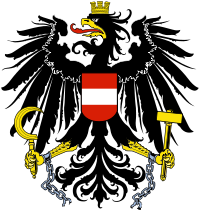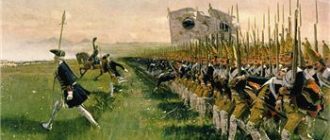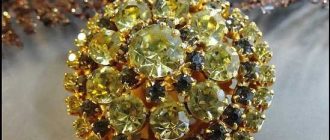Interested in knowing about the symbolism on the Austrian coat of arms? Find out as we take a look into the origins and evolution along with the meanings of the graphics on the Austrian coat of arms.
The coat of arms is a traditional symbol used in many countries of the world. Each country has derived its own version of the coat of arms. Austria too possesses a unique coat of arms with intense symbolism displayed on it. The coat of arms has evolved over a period of time to become what it is today. Although there are many countries that use a coat of arms all of them tend to be quite distinct from each other. Hence there is no chance of confusing the Austrian coat of arms with the Mexican one.
Description
The coat of arms attributed to the Republic of Austria is also known as the federal coat of arms. The image that occupies the central place on the coat of arms is a freely hovering single sided eagle Sable. On the breast of the eagle is a shield Gules. On the head of the eagle is a mural crown which has three visible merlons on it. Another interesting detail on the Austrian coat of arms is the broken iron chain that ties the eagle’s talons. The eagle stands with a sickle in its dexter talon and a hammer in the sinister talon.
History
On tracing back the history of the Austrian coat of arms we find that it was first adopted in the 13th parliament session in 1919. The credit for the first official drawing of the arms goes to Ernst Krahl. The particular version he drew showed the eagle in a much more rounded position. He paid a great deal of attention to detail such as the sickle and the hammer along with the circle of feathers. The 1945 version of the arms showcased the eagle in quite a similar fashion as it is today. The only difference was that the eagle was double headed and each head was surrounded by a golden nimbus.
The current symbol on the coat of arms was adopted in 1945. This time period was prior to the surrender of the Third Reich that occupied Austria. Today the symbol is well known all around the country but there have been attempts to make some alterations in the coat of arms. The motive behind the urge to alter some of the details on the coat of arms was the fact that it featured some communist elements. The sickle and the hammer along with the broken chains were the main items that represented the communist philosophy. Much to the dismay of these anti communist people none of these attempts actually managed to come into effect. Rather they ended as futile discussions on paper.
The meanings of the symbols today
The origin of the eagle is sometimes wrongfully attributed to the Habsburg. This is untrue because the Habsburg eagle was actually double headed with an imperial crown along with a sword and orb in its talons. Not only has the double headed monarchial eagle been replaced by a single headed republican eagle but the symbols have also been changed from royal to common. With the civic crown on its head and the sickle and hammer representing farmers and artisans along with the broken chains depicting the liberation from the Nazis the Austrian coat of arms has a lot of sentiments attached with it.





